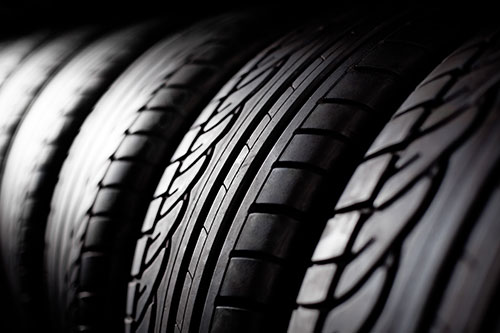Posted on 5/9/2024
There is no way to sugar coat it anymore. Tires are expensive. Sometimes it can be hard to justify purchasing 4 or more new tires at the same time. It can be tempting to “save money” and only purchase tires 2 at a time. Before you head down this road it is important to take into consideration some key reasons why this may not be the best choice for you and your car. In the grand scheme of things, it is usually better to replace all of the tires on the vehicle at the same time. The tires and their traction with the road, are the only thing between you and certain destruction. Taking a moment to consider that will ensure you make the best and safest choice for you and your loved ones. Uniformity. Replacing all the tires ensures uniformity in brand, model, size, age, and tread pattern, which promotes balanced performance across all wheels. In contrast, replacing only a pair of tires can result in mismatched trea ... read more
Posted on 12/7/2023

Nobody likes to see the “Uh-oh kitty face”. If you live in the Midwest and have a vehicle with TPMS, then you are likely to have experience with these systems. Generally, tire pressures change by 1 PSI for every 10°F in ambient temperature change. When we get hit with temperature swing day of 40-50°F, your tire pressures can vary as much as 5 PSI with the vehicle at rest. Then, as you drive the vehicle, the tires heat up and it can magnify the difference. Generally, a drop of 25% in tire pressure will illuminate the TPMS light. Running over a nail or screw, corroded aluminum wheels, and tire blow outs also affect your tire pressures. All can lead to your TPMS light illuminating. TPMS systems are common on most passenger cars and light trucks. They have been government mandated for all US light duty vehicles produced after September 1, 2007. Some vehicles have been using a version of TPMS since the early 1990s. This mainly developed from the use of run-flat and radia ... read more
Posted on 9/25/2023

ADAS (Advanced Driver Assistance Systems) In today's rapidly evolving automotive landscape, technology isn't just about enhancing entertainment and connectivity—it's about saving lives, improving convenience, and revolutionizing the way we drive. One of the most remarkable advancements in this realm is the implementation of Advanced Driver Assistance Systems, or ADAS. These systems are poised to shape the future of transportation, making our roads safer and our journeys more efficient. Understanding ADAS: What Are Advanced Driver Assistance Systems? ADAS refers to a suite of safety features and technologies integrated into modern vehicles to assist drivers in various ways. These systems use sensors, cameras, radar, and advanced software algorithms to provide real-time feedback, warnings, and, in some cases, autonomous control to enhance driving safety and comfort. Key Components of ADAS: ... read more
Posted on 1/18/2023

We get this question a lot here at Sanderson Auto Repair. It is commonly thought that a good “all season” tire is all that is needed in most passenger vehicle applications all the time. That is not quite the case. Tire manufacturers design tires for specific vehicle platforms along with weather conditions. “All season” tires are primarily designed for mostly dry weather. With some minor exposure to changing weather conditions. “ All season” tires are best swapped out for “winter tires” when the weather gets cold and the snow comes in. For example, the Firestone WinterForce, is a great “winter tire”. They are specifically designed for extreme cold and winter conditions. They improve vehicle stability, control, and braking in adverse, winter conditions. They are designed with a very soft tread compound and are limited to use at temperatures below 60°. A ... read more
Posted on 5/8/2015
What type of technology do you use? Do you prefer an 8-track tape or an iPod? When it comes to winter tires, much of Albert Lea motorists's perception dates back to when 8-track was the best way to listen to the Bee Gees. Twenty years ago in Albert Lea, winter tires differed from highway tires only in their tread design. Albert Lea motorists called them snow tires back then and they had big, knobby lugs that were designed to give good traction in deep snow. They had the same rubber compound as regular tires and they weren't very good on ice, packed snow or wet MN roads. They were not even very good on dry roads. They really helped in deep or loose snow, but they did a poor job the rest of the time. They were loud and rode hard. Albert Lea motorists couldn't wait to get them off in the spring. Then all-season tires started to appear in Albert Lea tire shops. All-season tires are really a compromise between summer and winter performance. They have acceptable hot weather ri ... read more